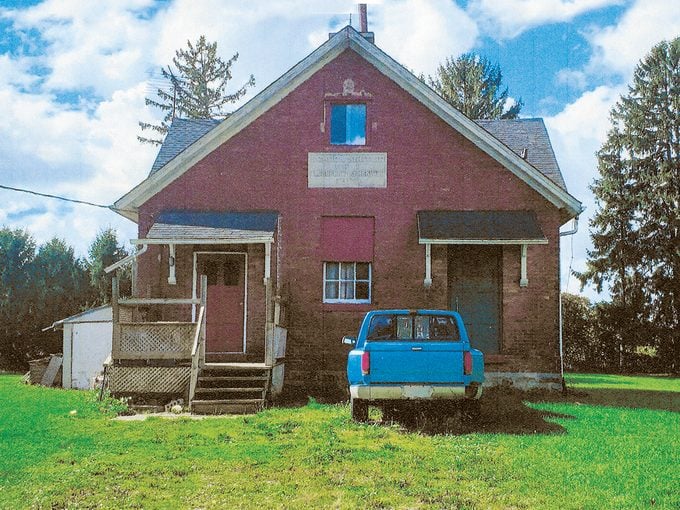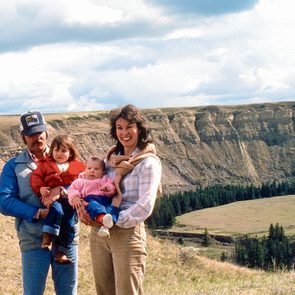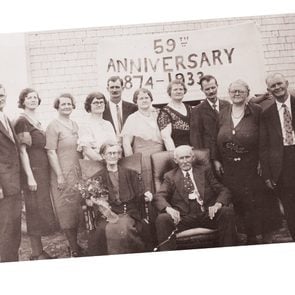I Taught in a One-Room Schoolhouse in the ‘50s—Here’s What It Was Like
Only 19 and fresh out of teacher's college, I learned as many lessons as my young students.

I read an article once pointing out that with the demise of the one-room schoolhouse, the country lost a unique type of student that we will not see again. Like the forgotten sound of a lonely steam engine crossing a valley, the children of the old country schools with their camaraderie and close relationships are sadly, lost relics of the past.
Memories of the One-Room Schoolhouse
I graduated from Grade 13 at Dutton High School and after spending one year in Toronto Teacher’s College, I took a position as teacher at S.S. # 1, a one-room schoolhouse in Aldborough Township, on Highway #3 near West Lorne, Ontario. I lived in West Lorne and was able to easily drive to and from school.
I remember the teacher who had taught before me saying as she left, “Good luck in your teaching. All my mistakes are here.” That was actually not as bizarre a statement as it sounds, since most of us took these jobs in country schools, fresh out of high school and with one year of teacher’s training, hoping that in time we would advance to greener pastures and larger academic institutions.
That first day of school as a 19-year-old teacher was a frightening prospect. It was one thing to have graduated from Teacher’s College as a successful student; it was another thing to face a classroom of little faces who were waiting to size up the “new teacher.” I had a classroom of 21 children of varying shapes and sizes. The youngest was five going on six, the eldest was 16 and fresh out of reform school! This one took special handling as I was only three years older than he was.
Because I had a degree in music, I was given $200 more per year, since I could teach that subject and thus avoid bringing in an outside instructor. This brought the grand total of my yearly salary in 1953 to $1,800.
There were two entry doors in my school, one for the girls, one for the boys, and just inside each door was a chemical toilet—no outdoor facilities for us!
In the autumn, a farmer would dump a load of wood at the back of the school and the students and I would be expected to go out and pile it up. The heat in the building was a big, wood-burning furnace down in the basement and the hot air came up through a large vent in the middle of the schoolroom. On cold days, I loved to stand on that vent and let the warm air circulate around me. Once, I sent my oldest student down to throw wood on the fire, as tending the furnace was one of my responsibilities. He piled all the wood he could into the furnace and the room got hotter and hotter. I went down to investigate and was horrified.
Luckily, I knew a bit about dampers and such, so the school did not burn down.
Taking Charge
Attendance was a matter of much more importance back then than it is now, when a parent may take a child out of school for any reason. Children were expected to attend regularly. I had one Dutch family, whose father would keep them out of school whenever he chose, to help with the farm work. This, of course, meant that they were always lagging behind the other students. Finally, I got fed up with this and sent the Truant Officer to straighten out the problem. Needless to say, I was very unpopular with that father from then on, but the children came to school much more regularly!
One of the most nerve-racking times was when the Inspector made his yearly visit to see if my teaching was up to standard. All the children were admonished to be very attentive and to think before they answered and I do not recall any bad reports of my instructions, but looking back I am amazed at how frightened we all were, teacher and students alike. What a power trip for this austere gentleman!
The Lighter Side
Every Christmas we held a concert in which all the students took part and which was attended by the entire community. I often felt this concert was the criteria by which my success as a teacher was measured. Still, it is a fact that preparing for the various presentations and working together to make it a success was a learning experience in itself. Holidays such as Thanksgiving, Valentine’s Day and Easter were all were good excuses to have a party and what fun it was!
I recall the time I decided to make pumpkin pies, enough for everyone to have a piece. I worked until late at night and left them to cool on the kitchen table. In the morning, I came out to admire my work only to find that my two kittens had carefully stepped across each pie! I sat down and cried, but my husband, who was quite a practical man, took a knife and smoothed over the surface of each pie and no one ever knew.
In warmer months, we could hold classes outdoors and eat lunch outside as well.
Across the road from my school lived a farmer who raised pigs and each spring the baby pigs would come to the fence to look at us and shake their little tails. I have had a fond spot for little pigs ever since then.
In the classroom, the concepts of sharing, helping and cooperation were instilled from the very first day. The older students helped the younger ones with learning, as well as with putting on coats, galoshes, hats and scarves. If someone’s lunch was forgotten, everyone shared a bit of their food. On rainy days, we would all, teacher and students alike, stayed inside at recess or noon hour to play games or tell stories. We were a family; we had good times and bad times and arguments and peace talks, but we kept learning. Far beyond arithmetic, social studies, reading, grammar and writing, we learned how to get along and to sort out our differences in a way that today’s world desperately needs to adopt. Even though I was a friend to each child, in a different way for each depending on ages, needs and personalities, I also expected and was given respect and obedience without any feeling on their part that this was encroaching on their individuality. I’m sure some of these small schools had poor teachers who cared little for the children and for whom this was just a job, however, the vast majority of us taught because we loved it and knew we were instructing the children in life as much as in subjects. I like to believe we turned out students who have made an impact on the world that will last long after we are gone.
Lessons Learned
I did not spend a lot of years teaching in a one-room schoolhouse. I retired to start a family then returned to university to obtain a Bachelor of Arts degree and to go on to teach in a secondary school.
As I look back on those early “green years” of teaching however, I realize that I learned as many lessons as my young students, including life lessons, and love for my fellow man, which have followed me all of my life. For me, too, “All my mistakes were there,” but more importantly a lot of my successes were there as well. Indeed, the world has lost a beautiful gift in the disappearance of the old eight-grade, one-room schoolhouse.
Next, find out what it was like growing up in an Eaton’s catalogue mail-order house.






